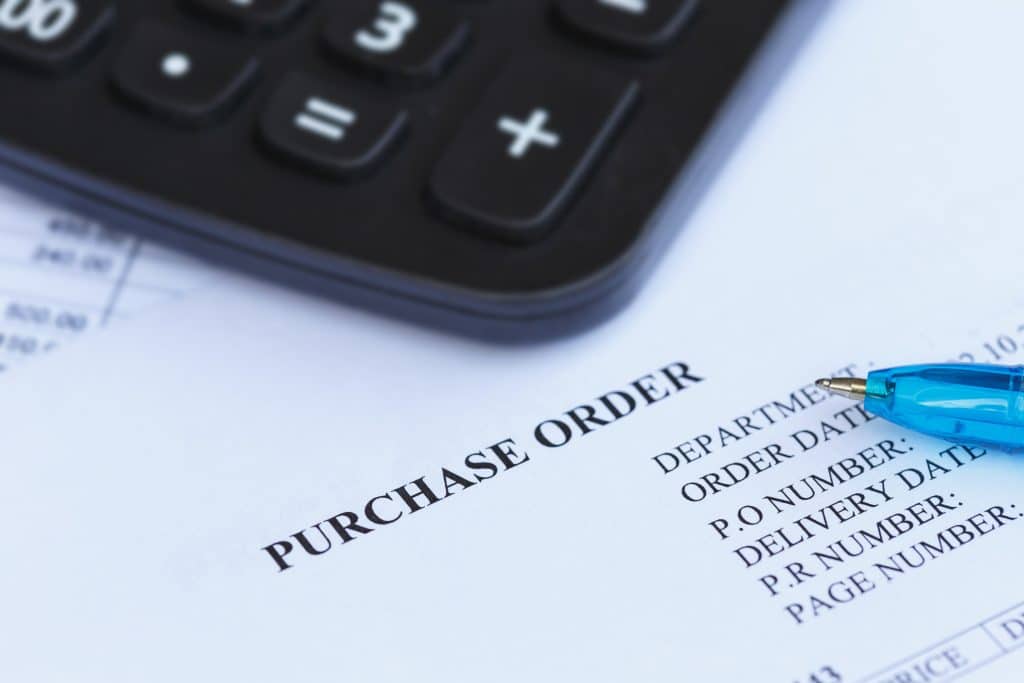A Purchase Order number (P.O.) is a unique number issued to a purchase order form. The purchase order specifies the items/ services a company desires to obtain from a specific provider/ supplier. The buyer and seller will refer to the purchase order number throughout the transaction.
Purchase Orders and Invoices: How Do They Work?
At the beginning of a transaction, the buyer (or client) of a product/ service creates and issues a Purchase Order. It specifies the details of a transaction, such as items/ services, quantity, and the agreed-upon cost. A properly completed purchase order should be thorough enough that the seller understands it without having to ask questions. In addition, the purchase order is legally binding because both parties have authorised it.
The purchase order number, generally at the top of the form, will be referenced throughout the transaction, such as in client phone conversations, shipping forms, and invoices.
The seller issues an invoice at the end of the transaction once fulfilling the terms outlined in the purchase order. The invoice is the bill. It will contain the items/ services delivered or offered by the supplier, as well as the quantities and prices. It will also provide the P.O. number to demonstrate that this transaction was pre-approved. The buyer must pay it within the conditions originally agreed upon receipt (for instance, the seller may require payments from all its vendors within 30 days).
What Is the Difference Between a P.O. Invoice and a Non-P.O. Invoice?
A P.O. invoice includes the purchase order number in the invoice. Non-P.O. invoices do not. A non-P.O. invoice indicates that no purchase order was generated or necessary for the billed transaction. Possible reasons for not producing a purchase order include the following:
- The order was urgent and was processed promptly (the customer did not have time to issue one).
- The transaction was for less than a certain amount of money. Many businesses have a policy of not issuing purchase orders for every transaction, only those that surpass a certain financial level. A corporation, for example, may not require purchase orders for all transactions under £10,000. If it does, a purchase order is necessary for approval by management.
- The company that requires the service/ product is so small that it cannot implement a functional accounting or purchase order system.
How Do I Get a P.O. Number?
Although a small business may create its own purchase order template and assign numbers to each new order, acquiring a professional purchase order system will save significant time and work.
Accounting software will produce fields for submitting purchase order information and assign each one a new unique number. A good accounting software system will also route purchase orders for approval automatically.
What Should Be Included on a Purchase Order?
A Purchase Order requires comprehensive information so that it is not misconstrued later. Please see “Purchase Order: How This Vital Document Aids Businesses.” for an in-depth explanation of what should be included.
Get in touch today to find out how we can help your business.
FAQs
Is a PO number the same as an invoice number?
Purchase order numbers and invoice numbers serve different records in the same deal. A PO number appears on the purchase order that the buyer signs off at the start, telling the supplier what to deliver and at what price. An invoice number sits on the bill the supplier issues once the work is done. Accounts staff pair the two numbers to confirm that the invoice matches the approved order before releasing payment.
How do I create a PO numbering system?
An effective PO numbering system is simple, steady, and automatic. Start with a short prefix like “PO”, add the year, then a four-digit sequence that climbs by one with every new order, for example PO-2025-0001. Let your accounting software create the next number so no one types it by hand or repeats a code. Many firms reset the sequence at the start of each financial year to keep files neat and easy to audit.
What happens if an invoice has no PO number?
If an invoice arrives without a PO number, the accounts team cannot tie it to an approved order. Most finance systems place the bill on hold or send it back to the supplier for correction. Until the missing reference is added, the invoice sits in limbo and payment will not move forward. This safeguard prevents unapproved spending and stops duplicate or fake invoices slipping through the net.

